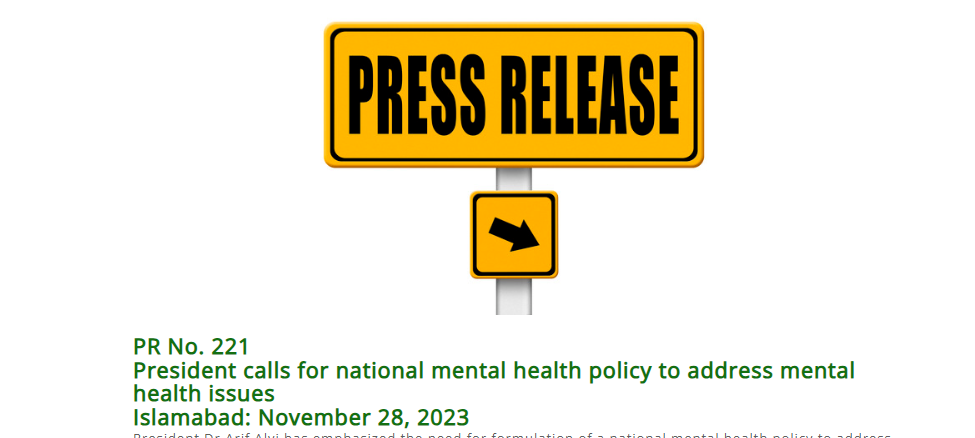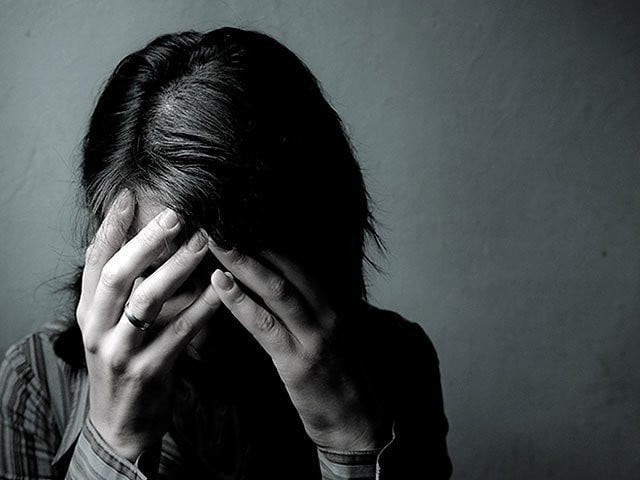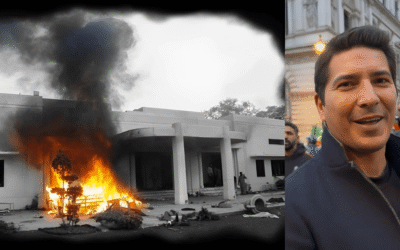Pakistan’s youth are currently grappling with a rapidly escalating mental health crisis. Recent media coverage paints a distressing picture: students are wrestling with anxiety, depression, self-harm, and tragically, suicide, which has now become the fourth leading cause of death among young Pakistanis, as reported by the Pakistan Institute of Living and Learning.
Recognising this pressing issue, state institutions have taken proactive steps. In November 2023, the President’s call for a comprehensive national mental health policy and his commendation of the “Humraaz” app—launched in April 2023—which has already received over 240,000 calls, providing on-demand therapy access and crisis intervention (PID), are promising signs. This visible leadership signifies a strategic shift: mental well-being is now a national priority, not a private concern.

Source: PID
Youth Under Pressure: Social and Digital Triggers
Economic uncertainty, academic stress, family conflicts, and digital pressures intersect dramatically in young lives. Studies show that 20–25% of Pakistanis face mental health issues, far above the global average, and many cases remain undiagnosed until adolescence.
Academic competition and familial expectations contribute heavily. Research indicates that excessive screen time, social media comparison, and cyberbullying intensify youth anxiety and disrupt sleep patterns, hindering both well-being and learning .In cities like Lahore, Karachi, and Peshawar, children are seeking relief in substance use or faith healing due to a lack of accessible mental health facilities, underlining systemic neglect amid growing desperation.
Suicide, Stigma, and Suffocating Silence
Far too frequently, young lives are claimed by suicide. Around 19,331 deaths were reported in 2019—most between ages 15–29—with each death representing 10–20 attempts . Male youth are disproportionately affected, yet female and younger victims also remain hidden under cultural taboo .

Source: TheNews
Social stigma remains the gravest barrier. Mental health is often dismissed as moral weakness or spiritual failure. Terms like “pagal” (mad) are casually used, silencing those in need of help, especially in rural and semi-urban communities. Human stories illustrate that academic pressure, domestic strife, and economic hardship can push youth into despair, forcing families to turn to spiritual remedies instead of medical care.
State-Led Interventions: Policies, Apps & Infrastructure
The government has begun closing service gaps. The ‘Humraaz‘ app, a 24/7 digital platform offering professional support and confidential counselling, has been a significant success, particularly among isolated youth. This success story underscores the potential of digital solutions in addressing mental health issues, inspiring policymakers and professionals to invest in similar initiatives.
Provincial efforts include school-based interventions. Under education ministry initiatives, teachers receive training to identify student distress early, thus integrating mental health into academic settings. The School Mental Health Programme is being piloted in Punjab, following successful models from developed countries.
Expansion of the counselling workforce is underway. Universities have begun hiring counsellors, while services like Marham, PACT, and Taskeen offer free tele-counselling, especially in urban centres. Financial backing is gradually improving: although current mental health expenditure remains under 0.5% of the health budget, policymakers recognise the need to match funding with the growing demand.
Cultural and Structural Hurdles
Despite growing state action, barriers remain. Only 500 psychiatrists serve a Brazil-sized population, primarily in urban areas . Rural regions, where nearly 90% of mental health needs go unmet, remain severely underserved.
A lack of licensing and oversight means many unqualified practitioners operate freely. Patients risk mistreatment and high costs due to the absence of regulatory bodies . Weak legal frameworks exacerbate neglect. Though Pakistan’s mental health legislation exists, provincial authorities have been slow to implement vital regulatory rules.
Finally, deep cultural resistance persists. Many families maintain faith-based or spiritual approaches, stigmatising professional mental health treatment and reinforcing silence and isolation (PakistanToday). Recognising and addressing this cultural resistance is crucial in developing effective mental health policies, as it can help policymakers and professionals understand the importance of cultural sensitivity in their work.
Roadmap for Youth-Focused Mental Health: The Need for Systemic Reforms
To truly curb the crisis, the following paths forward are crucial:
- Enact and enforce mental health legislation: Provincial governments must operationalise mental health authorities with clear roles, licensing, and formal oversight.
- Expand telehealth access: Scaling platforms like Humraaz and Taskeen, particularly in remote regions, can ensure wider access.
- Integrate into education: Include mental health literacy in curricula, expand school counsellor programs, and regularise teacher training.
- Regulate professionals: Establish licensing and accountability bodies to validate providers and prevent malpractice.
- Public awareness campaigns: National media-led efforts, endorsements by religious leaders, and social campaigns can reduce stigma and encourage help-seeking.
- Policy funding: Raising mental health expenditure to at least 2% of the health budget is not just an investment in the well-being of the population, but also in the nation’s growth. This increased funding will ensure that human resources, infrastructure, and access are prioritised, leading to a healthier and more productive society.
- National suicide prevention: Launch 24/7 hotlines integrated with provincial mental health plans and improve data collection and response mechanisms.
The Promise of a State-Endorsed Response
By acknowledging the crisis and adopting a multi-pronged approach, the government has signalled its intent. The combination of technological innovation (via Humraaz), legislative efforts, institutional expansion, and community engagement offers hope that youth mental health is finally moving to centre stage. These strategies align with global standards and signal Pakistan’s commitment to aligning social progress with state governance.
Young citizens represent both the bright future and the urgent responsibility of the nation. Effective implementation of mental health policies and investments now can turn despair into resilience. In doing so, Pakistan not only protects its most vulnerable generation but also builds a stronger, more cohesive society.
Pakistan’s youth mental health journey has evolved from taboo to state priority. Recognition of youth suicide, launch of digital tools like Humraaz, school-based mental services, and ongoing system reforms mark progress. Yet, challenges persist—shortages, stigma, weak regulation—and addressing them requires legal action, expanded access, funding, and cultural sensitivity.
If these next steps are achieved, Pakistan will not simply combat a crisis; it will cultivate a generation empowered to thrive. A mentally healthy youth is essential to national growth, and right now, strategic action could make all the difference.







